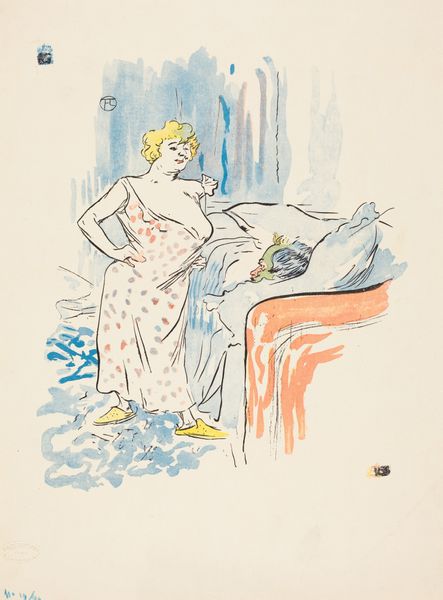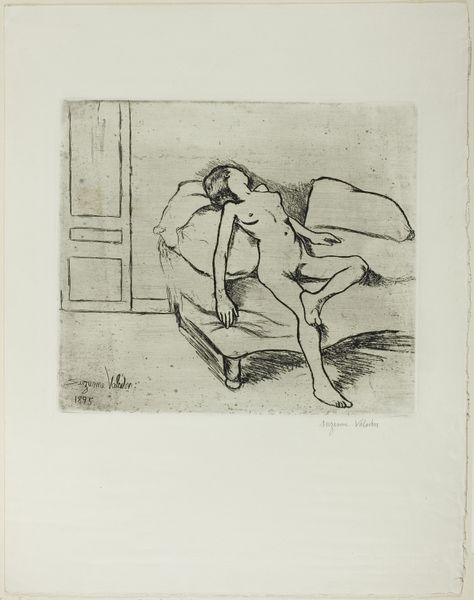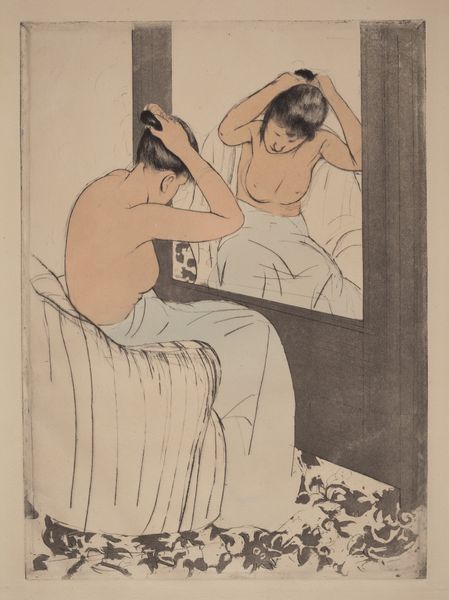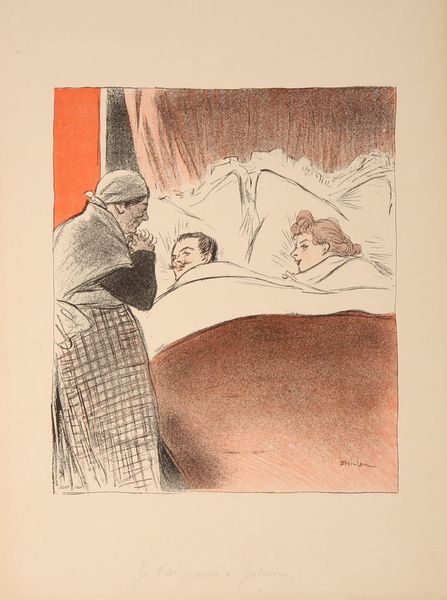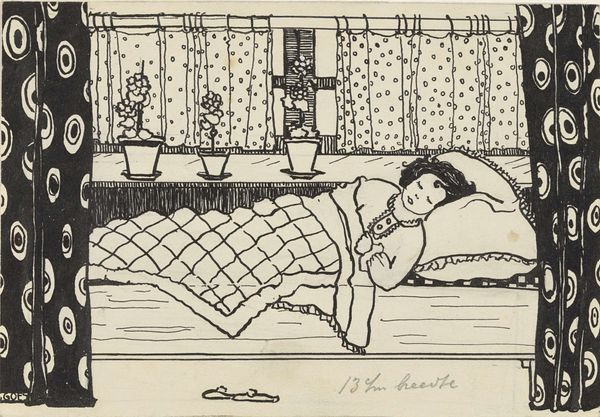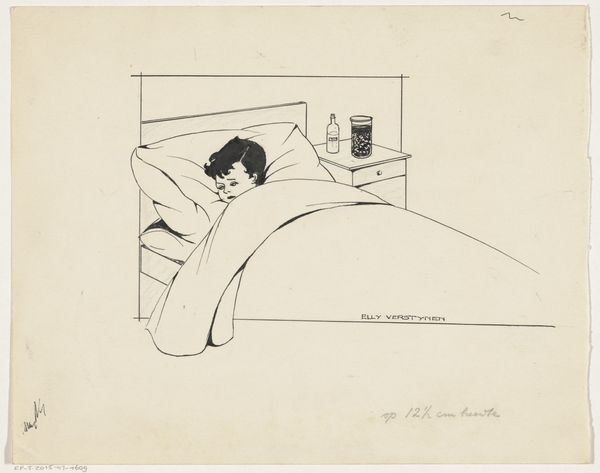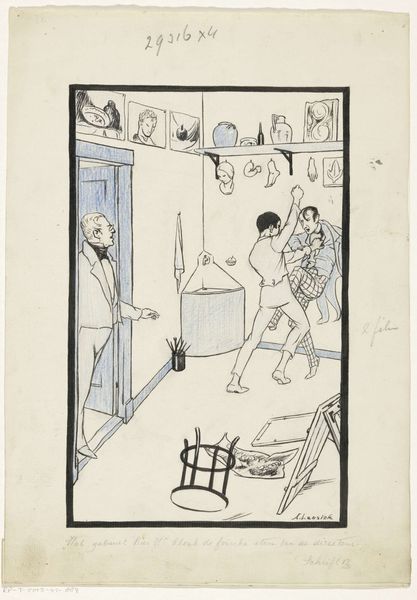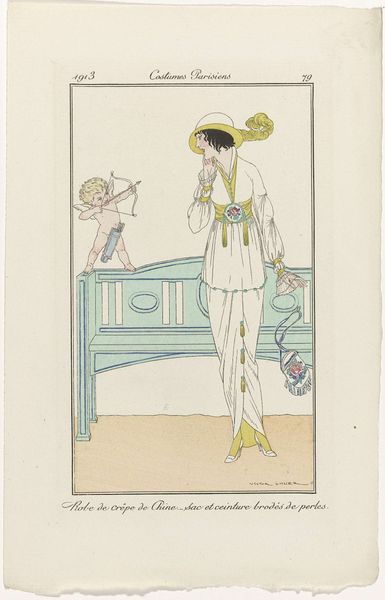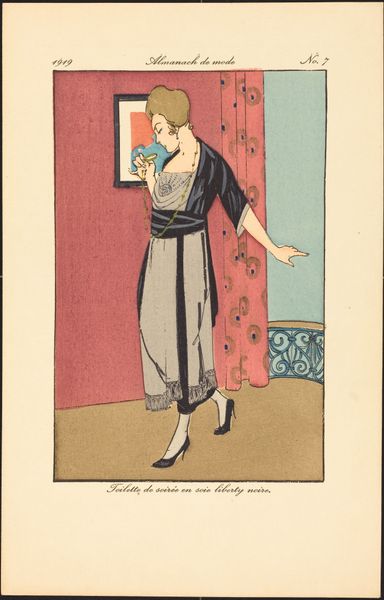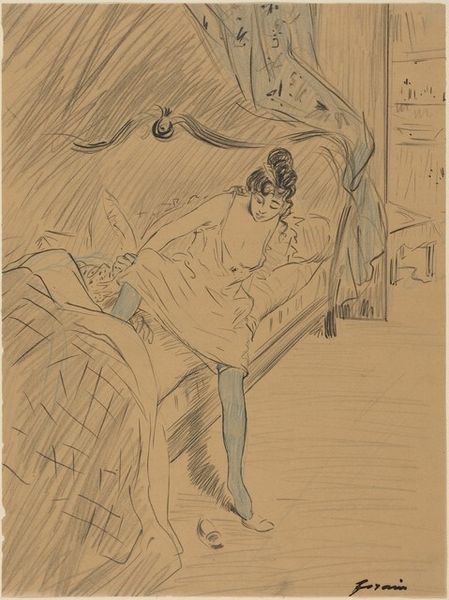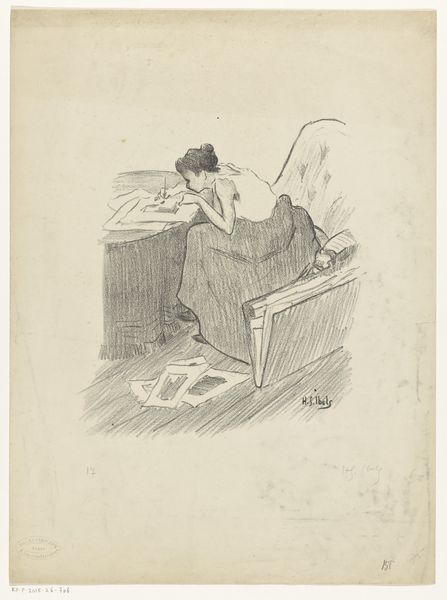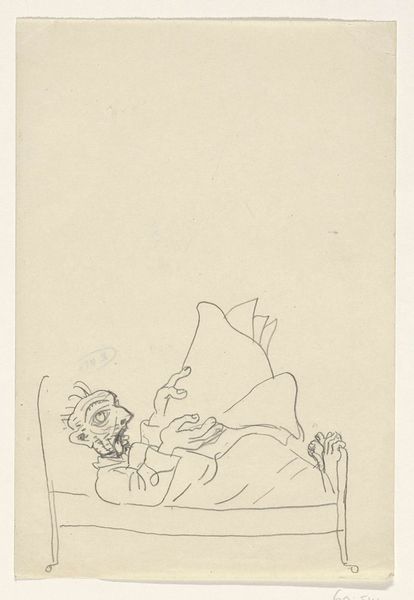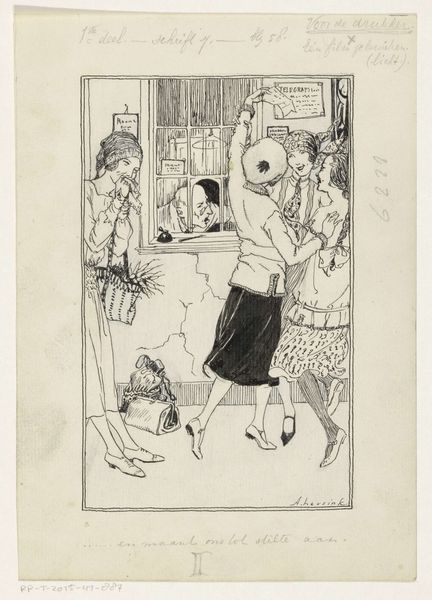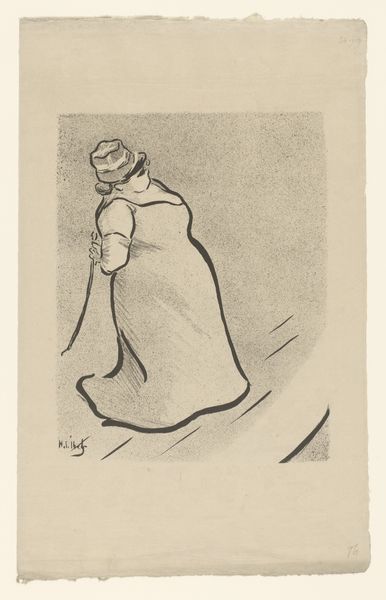
Journal des Dames et des Modes, Costumes Parisiens, 1914, No. 180 : Costume et coiffure de nuit (...) 1914
0:00
0:00
graphic-art, print
#
portrait
#
graphic-art
#
art-nouveau
# print
#
figuration
#
genre-painting
#
decorative-art
Dimensions: height 177 mm, width 109 mm
Copyright: Rijks Museum: Open Domain
This fashion plate, created in Paris in 1914, depicts a woman in a yellow muslin nightgown, set against the backdrop of a bedroom. Take note of the doves. Doves, often symbols of peace, love, and purity, have ancient roots. From the Near East, where they were associated with the goddess Ishtar, to the Roman era, where they symbolized devotion and the soul, doves have traversed time and cultures. In Christian iconography, the dove represents the Holy Spirit, an embodiment of divine peace. Here, the doves might evoke a sense of tranquility and domestic harmony in this intimate scene. Yet, even as symbols evolve, they retain echoes of their past. The enduring presence of the dove in art and culture reflects our collective, subconscious yearning for harmony. This yearning engages viewers on a profound level, stirring emotions and memories tied to this simple image. Like a recurring dream, the dove resurfaces throughout art history, constantly transformed yet forever connected to its origins.
Comments
No comments
Be the first to comment and join the conversation on the ultimate creative platform.
